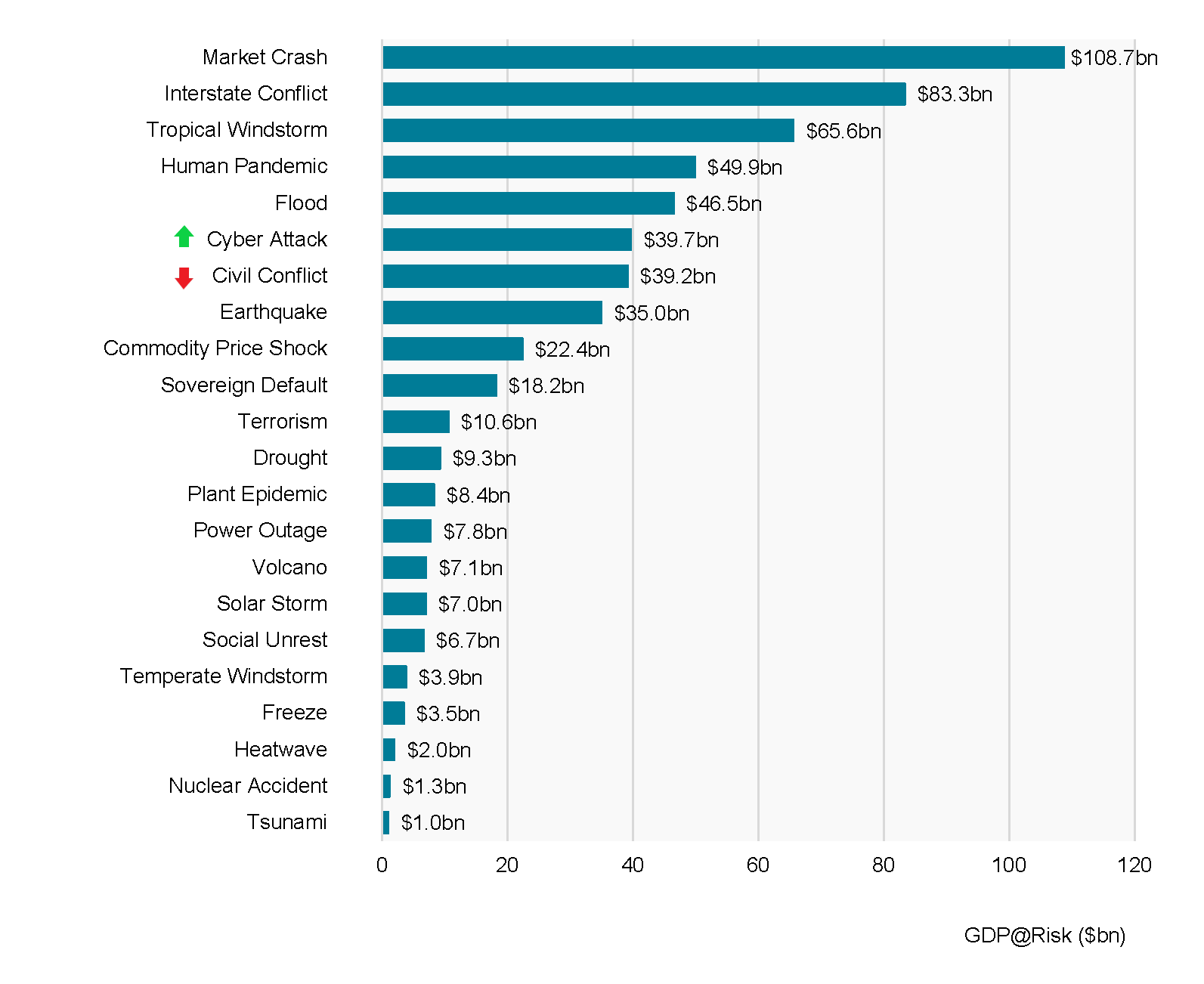
The 2019 Global Risk Index sees a further increase in the level of global risk, with expected loss increasing to 1.57% (or $577 bn) of global GDP, from 1.54% in the 2018 Global Risk Index. This rise has been driven by individual threats such as Cyber Attack, Social Unrest, Commodity Price Shocks, Heatwave, Freeze and Solar Storms. However the overall highest threat classes remain the same as in the 2018 Index: Natural Catastrophe, Finance, Economics & Trade and Geopolitics & Security.
Amongst the individual threat rankings, Cyber Attacks have ascended one ranking and bypassed Civil Conflict in the 2019 Index. Cyber attacks continue to possess the capacity to inflict severe economic damage. The capacity for cyber attacks to cause such damage has risen significantly since 2015 when the Centre for Risk Studies compiled its first Global Risk Index. Recent events, such as the NotPetya and WannaCry attacks of 2017, have demonstrated the capacity for cyber attacks to cause significant harm and disruption. This is a threat that requires close monitoring as the increasing number and severity of cyber attacks is countered by capabilities to protect against them and mitigate their effects. The changing cyber landscape has been explored by the Centre further in the Cyber Risk Outlook 2018, published earlier this year.
The top 10 ‘riskiest’ global cities in the Centre for Risk Studies’ 2019 Index are Tokyo followed by New York, Manila, Istanbul, Taipei, Osaka, Los Angeles, London, Baghdad and Shanghai. The reasons they emerge highest on the list is due to two factors: their large annual GDP output leading to the greater potential, if unlikely, for major losses; and exposure to certain shocks associated with the geography and type of economy of each city. Overall, the Centre for Risk Studies’ analysis shows a 5.6 per cent increase in GDP@Risk from 2018 to 2019.
The underlying analytics of the Risk Index provide a methodology for governments, infrastructure providers, insurers and development organisations can use to quantify the economic value of improvements in city resilience. The Index can also aid corporates in understanding their own exposure to the range of threats modelled.
The 2019 Cambridge Global Risk Index Executive Summary will be available for download from our website.
Top threats
The top three classes of threats in the 2019 Index by size of potential impact, are:
Natural catastrophes: GDP@Risk of $174bn
Financial, economic and trade: GDP@Risk of $149bn
Geopolitics and security: GDP@Risk $140bn
The complete ranking of the 22 threats in the Cambridge Global Risk Index 2019 is shown below.




Leave a Reply